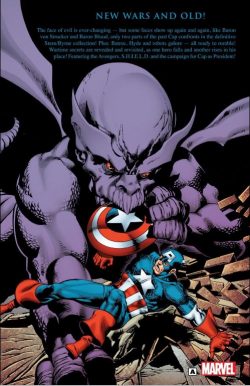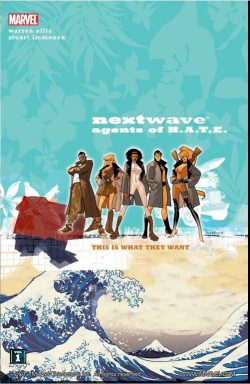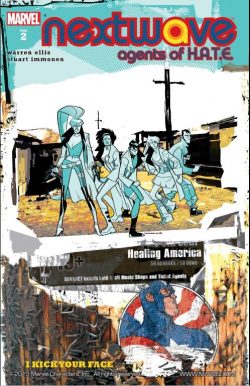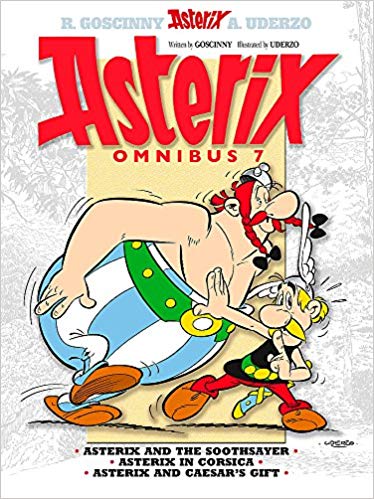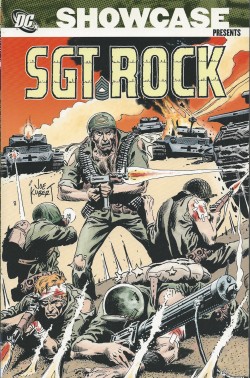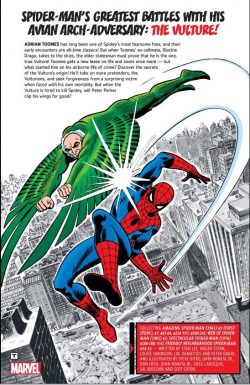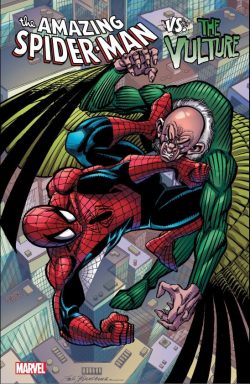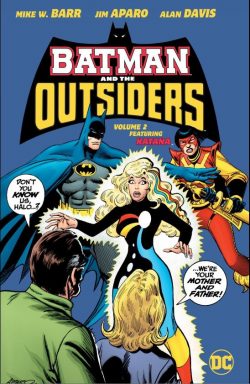

By Stan Lee, Roy Thomas, Dick Ayers & various (Marvel)
ISBN: 978-0-7851-4212-6 (HB)
Sgt. Fury and his Howling Commandos began as an improbable, decidedly over-the-top, rowdy and raucous WWII combat comics series similar in tone to later ensemble action movies such as The Magnificent Seven, The Wild Bunch and The Dirty Dozen. The surly squad of sorry reprobates premiered in May 1963, one of three action teams concocted by creative men-on-fire Jack Kirby & Stan Lee to secure fledgling Marvel’s growing position as the comics publisher to watch.
Two years later Fury’s post-war self was retooled as the big-name star of a second series (beginning with Strange Tales #135, August 1965) when TV espionage shows such as The Man from U.N.C.L.E. or Mission: Impossible and the James Bond film franchise became global sensations.
Nick Fury, Agent of S.H.I.E.L.D. combined Cold War tensions with sinister schemes of World Domination by subversive all-encompassing hidden enemy organisations: with captivating super-science gadgetry and iconic imagineering from Jack Kirby and Jim Steranko.
For all that time, however, the original wartime version soldiered on (sorry: puns are my weapon of choice), blending a uniquely flamboyant house-bravado style and often ludicrous, implausible, historically inaccurate, all-action bombast with moments of genuine heartbreak, unbridled passion and seething emotion.
Sgt. Fury started out as a pure Kirby creation. As with all his various combat comics, The King made everything look harsh and real and appalling: the people and places all grimy, tired, battered yet indomitable.
The artist had served in some of the worst battles of the war and never forgot the horrific and heroic things he saw (and more graphically expressed in his efforts during the 1950s genre boom at a number of different companies). However, even at kid-friendly, Comics Code-sanitised Marvel, those experiences perpetually leaked through onto his powerfully gripping pages.
Kirby was – unfortunately – far too valuable a resource to squander on a simple war comic (or indeed the X-Men and Avengers: the other series launched in that tripartite blitz on kids’ spending money) and he was quickly moved on, leaving redoubtable fellow veteran Dick Ayers to illuminate later stories, which he did for almost the entire run of the series (95 issues plus Annuals) until its transition to a reprint title with #121 (July 1974). The title then carried on until its ultimate demise, with #167, in December 1981.
Ex-serviceman Lee remained as scripter until he too was pulled away by the developing Marvel phenomenon after which a succession of youthful, next-generation writers took over, beginning with Roy Thomas who provide welcome background in his Introduction, after which this third hardback and eBook compendium re-presents the contents of Sgt. Fury and his Howling Commandos #24-32 and the second Annual (collectively spanning November 1965 to August 1966) opening with a Lee scripted, Ayers and Frank Giacoia (AKA Frankie Ray) inked milestone as the war-weary squad head back to America in ‘When the Howlers Hit the Home Front!’
Of course, they still find plenty of trouble when battle comrade and Kentucky gentleman “Rebel†Ralston and his family are captured by Nazi Bundists and the First Attack Squad forgoes leave to rush to the rescue. At adventure’s end, however, the victorious team are forced to leave grievously wounded corporal Dum Dum Dugan behind to recuperate…
John Tartaglione signed on as regular inker for ‘Every Man My Enemy!’ as the unit return to Britain to commence a secret mission and expose a spy who has infiltrated their Army camp. The hunt eventually uncovers one of history’s greatest super-villains and leads to the first of many deadly clashes between Fury and the most dangerous man alive…
Golden Age veteran Carl Hubbell deployed his pens and brushes on ‘Dum Dum Does It the Hard Way!’, as the doughty corporal is shot down in the Atlantic whilst seeking to rejoin the Howlers, precipitating a stirring saga of privation and courage as the flight crew’s life raft is picked up by merciless U-Boat commander Vice Admiral Ribbondorf – the Sea Shark! That move was only the Nazi’s first mistake…
Issue #27 – by Lee, Ayers & Tartaglione – then reveals the origin of the sturdy sergeant’s optical injury (which would, in later life, lead to his adopting that stylish eyepatch) when the squad are despatched to Germany to destroy a new Nazi beam weapon. A now-obligatory SNAFU separates the squad and ‘Fury Fights Alone!’ before finally escaping “Festung Europa†and battling his way back to Blighty…
In the previous volume readers saw how Hitler demanded that his elite field commander should form a specialist unit to surpass Fury’s Commandos. The result was The Blitzkrieg Squad of Baron Strucker and they proved utterly ineffectual. Now the Fuhrer gives his once-favoured Prussian aristocrat one last chance to prove himself by obliterating the French town (and Resistance stronghold) Cherbeaux: a task even the disaffected Junker feels is a step too far…
With the town mined and the population imprisoned within, Fury’s Commandos are sent to stop the promised atrocity in ‘Not a Man Shall Remain Alive!’ The battle in the streets ends with another spectacular face-off between the icons of two warring ideologies and ‘Armageddon!’ for the hostage city…
With Strucker’s threat seemingly ended, Roy Thomas begins his run with ‘Incident in Italy!’ as the First Attack Squad parachute into a trap and are locked up in a POW camp. With the spotlight on former movie idol Dino Manelli, the Howlers link up with partisans, bust open the camp, free the captives and blaze their way back to liberty, before ‘Into the Jaws of… Death!’ sees the heroes retraining for underwater demolitions before being distracted by the abduction of their commander, Captain Samuel “Happy Sam†Sawyer. It’s the biggest and last mistake this bunch of Gestapo goons ever make…
The monthly missions conclude here with another episode of infernal intrigue as one of the Howlers is insidiously indoctrinated and turns against his comrades as they battle for their lives in Norway while dealing with ‘A Traitor in Our Midst!’…
Sgt. Fury and his Howling Commandos Annual #2 was released in August 1966, and offered a brace of reprints (not included here) plus an all-new but out-of-continuity tale by Thomas, Ayers & Tartaglione. ‘A Day of Thunder!’ is set on June 5th 1944 and stirringly reveals the pivotal role the Howling Commandos play in paving the way for D-Day…
Closing this comics campaign is an unused cover art by Ayers.
Whereas close rival DC increasingly abandoned the Death or Glory bombast at this time in favour of humanistic, practically anti-war explorations of war and soldiering, Marvel’s take always favoured action-entertainment and fantasy over soul-searching for ultimate truths. On that level at least, these early epics are stunningly effective and galvanically powerful exhibitions of the genre. Just don’t use them for history homework.
© 1965, 1966, 2017 Marvel Characters Inc. All rights reserved.

